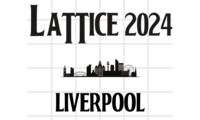Speaker
Description
Quantum simulation holds promise of enabling a complete description of high-energy scattering processes rooted in gauge theories of the Standard Model. A first step in such simulations is preparation of interacting hadronic wave packets. To create the wave packets, one typically resorts to adiabatic evolution to bridge between wave packets in the free theory and those in the interacting theory, rendering the simulation resource intensive. In this work, we construct a wave-packet creation operator directly in the interacting theory to circumvent adiabatic evolution, taking advantage of resource-efficient schemes for ground-state preparation, such as variational quantum eigensolvers. By means of an ansatz for bound mesonic excitations in confining gauge theories, which is subsequently optimized using classical or quantum methods, we show that interacting mesonic wave packets can be created efficiently and accurately using digital quantum algorithms that we develop. Specifically, we obtain high-fidelity mesonic wave packets in the $Z_2$ and $U(1)$ lattice gauge theories coupled to fermionic matter in 1+1 dimensions. Our method is applicable to both perturbative and non-perturbative regimes of couplings. The wave-packet creation circuit for the case of the $Z_2$ lattice gauge theory is built and implemented on the Quantinuum H1-1 trapped-ion quantum computer using 13 qubits and up to 308 entangling gates. The fidelities agree well with classical benchmark calculations after employing a simple symmetry-based noise-mitigation technique. This work serves as a step toward quantum computing scattering processes in quantum chromodynamics.

